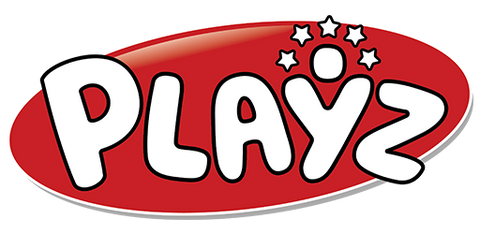
9 Fun Paper Activities for Kids to Try in 2025
In an age of endless digital distractions, a humble sheet of paper remains a powerhouse for childhood development and creative expression. It’s inexpensive, accessible, and serves as a blank canvas for boundless imagination. The most engaging paper activities for kids go far beyond simple cutting and pasting; they are gateways to learning critical skills. These activities are instrumental in developing problem-solving abilities, enhancing fine motor control, and even introducing basic scientific and engineering concepts.
This comprehensive guide walks you through nine distinct, screen-free paper crafts designed to transform simple materials into hours of creative and educational play. From the precision of origami to the messy fun of paper mâché, each activity is broken down with clear, step-by-step guidance and actionable tips for parents and educators. We'll also highlight the surprising developmental benefits hidden within every fold, tear, and glue-dot.
Get ready to rediscover the profound joy of hands-on creativity. This curated list provides projects that not only entertain but also foster essential cognitive and physical skills, proving that a simple piece of paper is one of the most powerful learning tools you can give a child.
1. Origami (Paper Folding)
Origami, the traditional Japanese art of paper folding, transforms a flat sheet of paper into a three-dimensional sculpture using only folds. This classic activity is one of the most versatile paper activities for kids, requiring no scissors or glue, just patience and precision. Children can create everything from simple animals like swans and frogs to intricate geometric shapes, making it a fantastic outlet for creativity and focus.
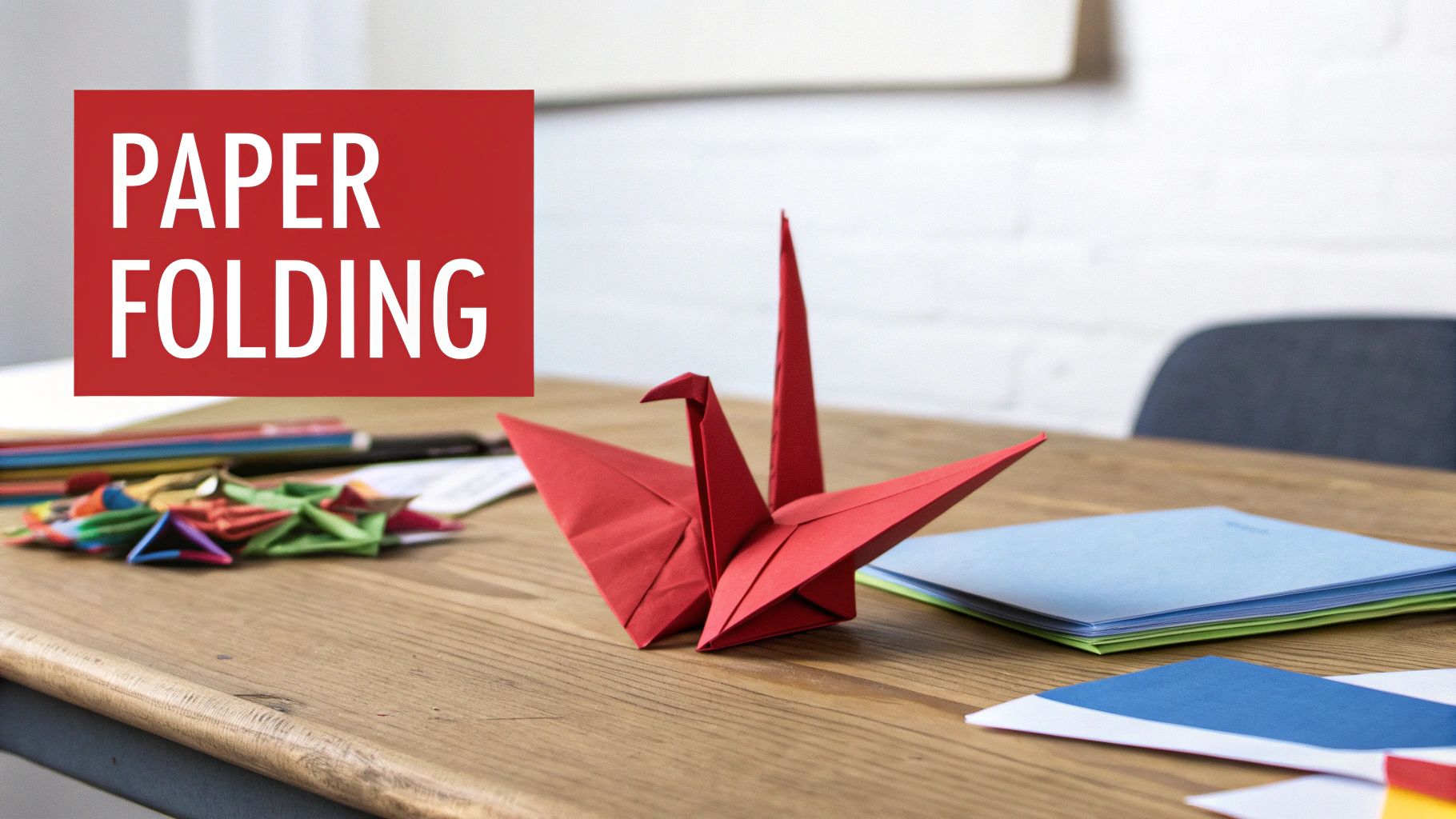
This ancient art form is more than just a craft; it's a powerful educational tool. Origami naturally develops fine motor skills as children make precise folds, enhances spatial reasoning by visualizing 2D instructions into 3D objects, and teaches patience and perseverance.
Getting Started with Origami: Actionable Tips
To introduce your child to paper folding, focus on simplicity and accessibility. Start with beginner-friendly designs that yield satisfying results quickly, building confidence for more complex projects later.
- Start Simple: Begin with classic, easy-to-learn models like a paper boat, a fortune teller (cootie catcher), or a simple jumping frog. These projects deliver a sense of accomplishment quickly.
- Use the Right Paper: While any paper works, thin, square origami paper is designed for folding and makes crisp creases easier. You can also use gift wrap or magazine pages cut into squares for a colorful, recycled option.
- Be Precise: Encourage your child to make sharp, accurate folds by pressing down firmly along each crease. Precision is key to a successful model.
- Follow Visual Guides: Combine printed diagrams with video tutorials. Watching the folding process in action often clarifies tricky steps for visual learners.
2. Paper Mâché Crafts
Paper mâché is a classic and versatile craft that transforms simple paper strips and paste into durable, three-dimensional art. This composite material, made from paper pieces bound with an adhesive, allows children to build and sculpt everything from masks and piñatas to decorative bowls and models of the solar system. It’s an engaging, multi-day project that combines messy fun with creative expression.
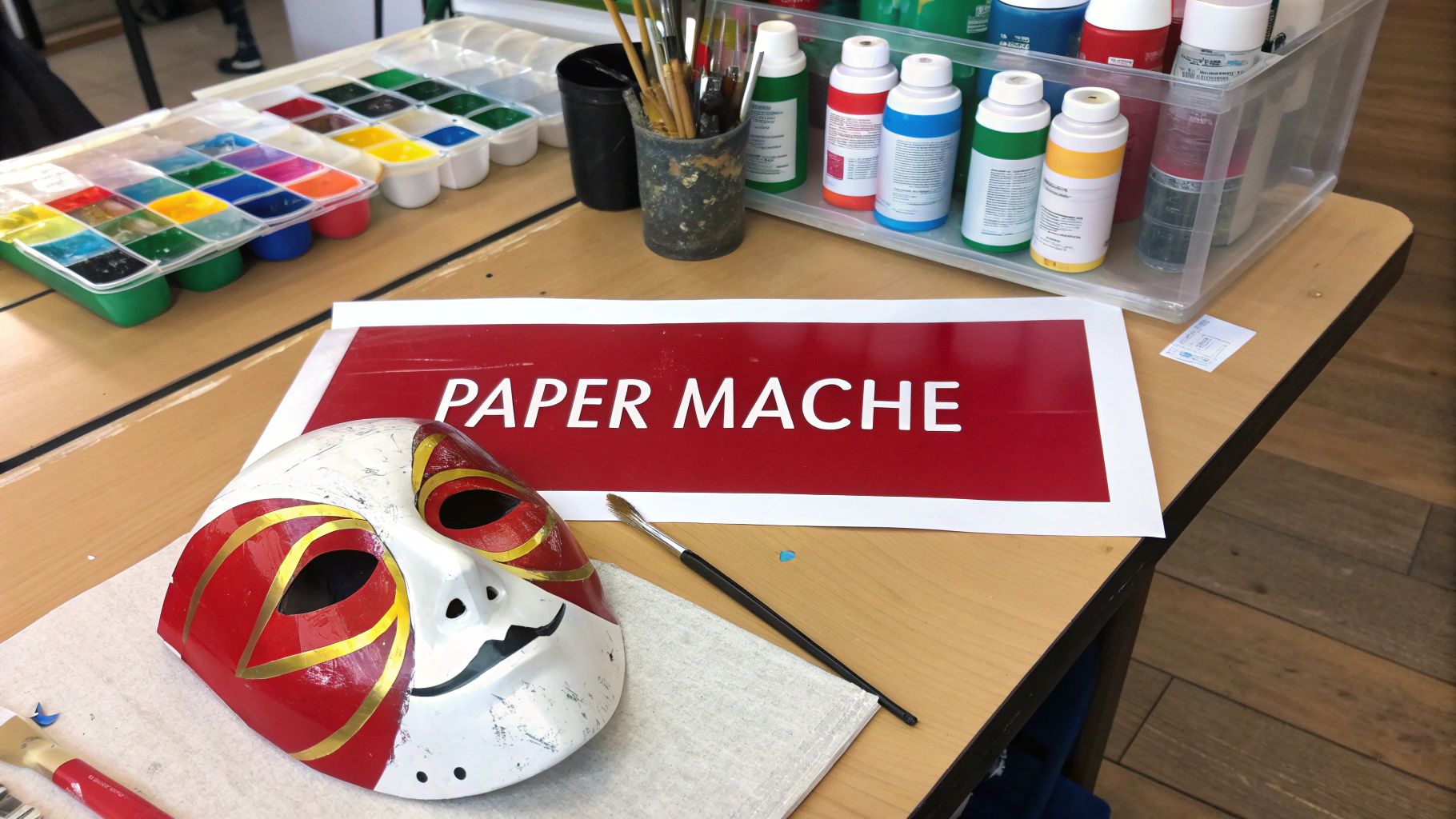
This hands-on activity is excellent for teaching kids about structure, patience, and the process of turning a concept into a physical object. As they layer strips and wait for their creation to dry, they develop fine motor skills, learn about material properties, and practice following multi-step instructions, making it a valuable addition to any list of paper activities for kids.
Getting Started with Paper Mâché: Actionable Tips
Setting up a paper mâché project is simple, but a little preparation goes a long way. The key is to embrace the mess and focus on building a strong, smooth foundation for the final painted masterpiece.
- Prepare Your Paste: Create an effective adhesive by mixing one part flour with two parts water until smooth. Alternatively, a 50/50 mixture of white school glue and water works perfectly and dries clear.
- Use the Right Form: Balloons are a popular and easy base for masks or piñatas. Coat the balloon with a thin layer of petroleum jelly before starting to ensure the paper mâché shell can be removed easily once dry.
- Tear, Don't Cut: Tear newspaper into strips about one inch wide. The torn, feathered edges blend together more smoothly than cut edges, creating a stronger and more seamless surface.
- Layer and Dry: Apply 3-4 layers of paste-soaked strips, allowing each layer to partially dry before adding the next. Let the final project dry completely for 24-48 hours before painting and decorating.
3. Paper Plate Crafts
Paper plate crafts transform a humble disposable plate into a world of creative possibilities, including masks, animals, wreaths, and puppets. The sturdy, circular shape and plain white surface of paper plates make them an ideal and inexpensive canvas for children's imaginations. These versatile paper activities for kids combine multiple techniques like cutting, painting, and gluing, offering a comprehensive crafting experience in one accessible project.
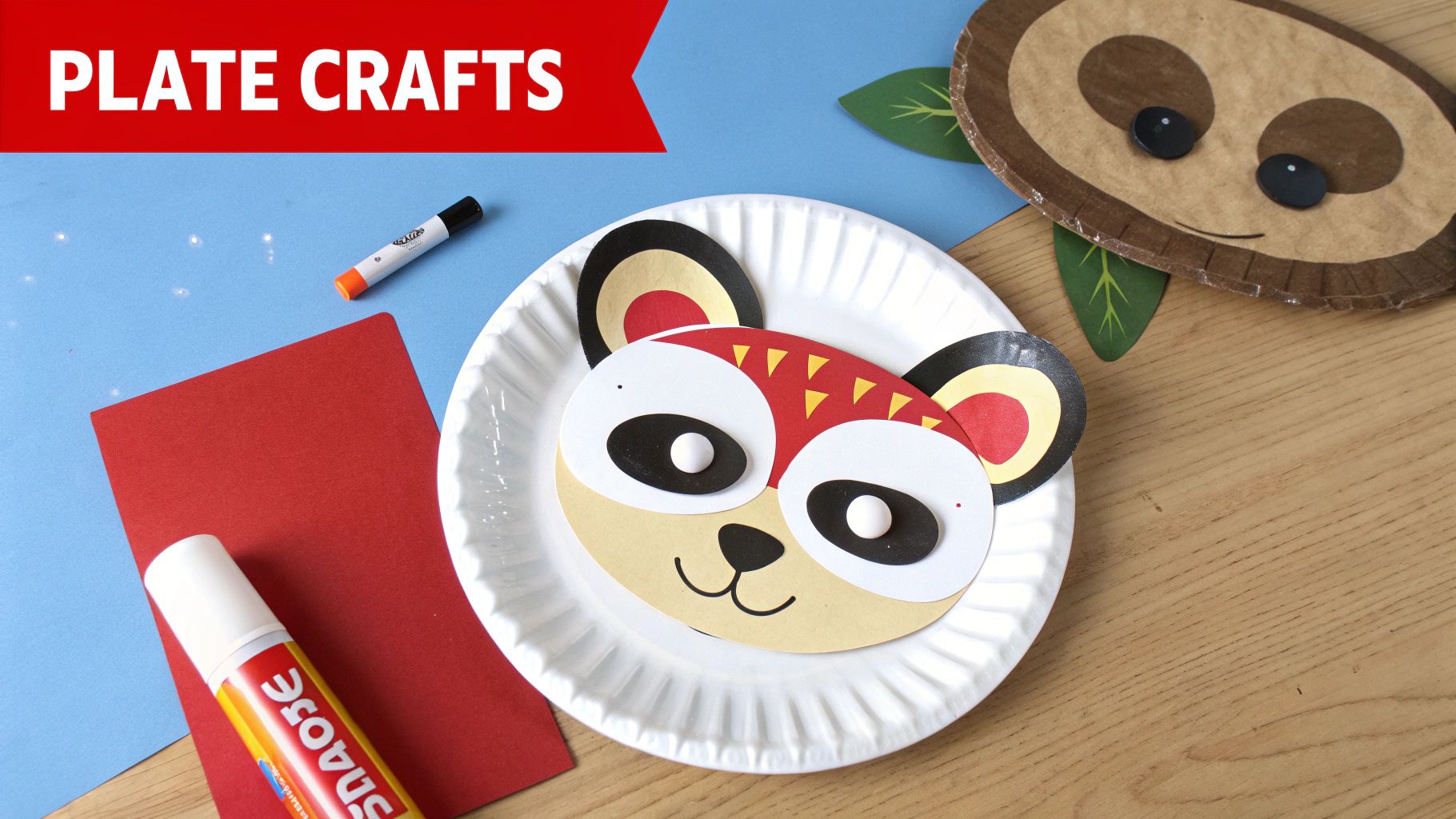
This simple craft is a staple in preschools and homes for a reason. It encourages creativity while developing crucial skills such as hand-eye coordination from painting and cutting, and planning skills as children decide how to turn a flat circle into a three-dimensional object like a ladybug or a friendly lion. The process of making animal faces or character masks also supports storytelling and dramatic play.
Getting Started with Paper Plate Crafts: Actionable Tips
The beauty of paper plate crafts lies in their simplicity and the minimal supplies required. You can create impressive projects with just a few plates, some paint, and glue, making it an excellent activity for any day.
- Choose Sturdy Plates: Opt for sturdier, uncoated paper plates. Flimsy plates can become soggy with paint or glue and are harder to cut.
- Use the Whole Plate: Encourage children to use the plate’s features in their design. The ridged edge can become a lion’s mane, the rays of the sun, or the petals of a flower.
- Prepare for Younger Kids: For toddlers and preschoolers, pre-cut any complex shapes they might need. This allows them to focus on the fun of painting and assembling. You can find more ideas for creative crafts for preschoolers on playzusa.com.
- Add Functionality: Attach a craft stick to the back of a decorated plate to create a simple hand-held puppet or mask. Use a hole punch and some yarn to create wearable masks for imaginative play.
4. Paper Weaving
Paper weaving introduces children to the fundamental over-under pattern of traditional weaving using colorful paper strips instead of yarn. By cutting slits in a base sheet and interlacing contrasting paper strips, kids can create beautiful checkered patterns, placemats, bookmarks, or decorative art. This activity is one of the most accessible paper activities for kids to learn basic textile concepts and see immediate, visually rewarding results.
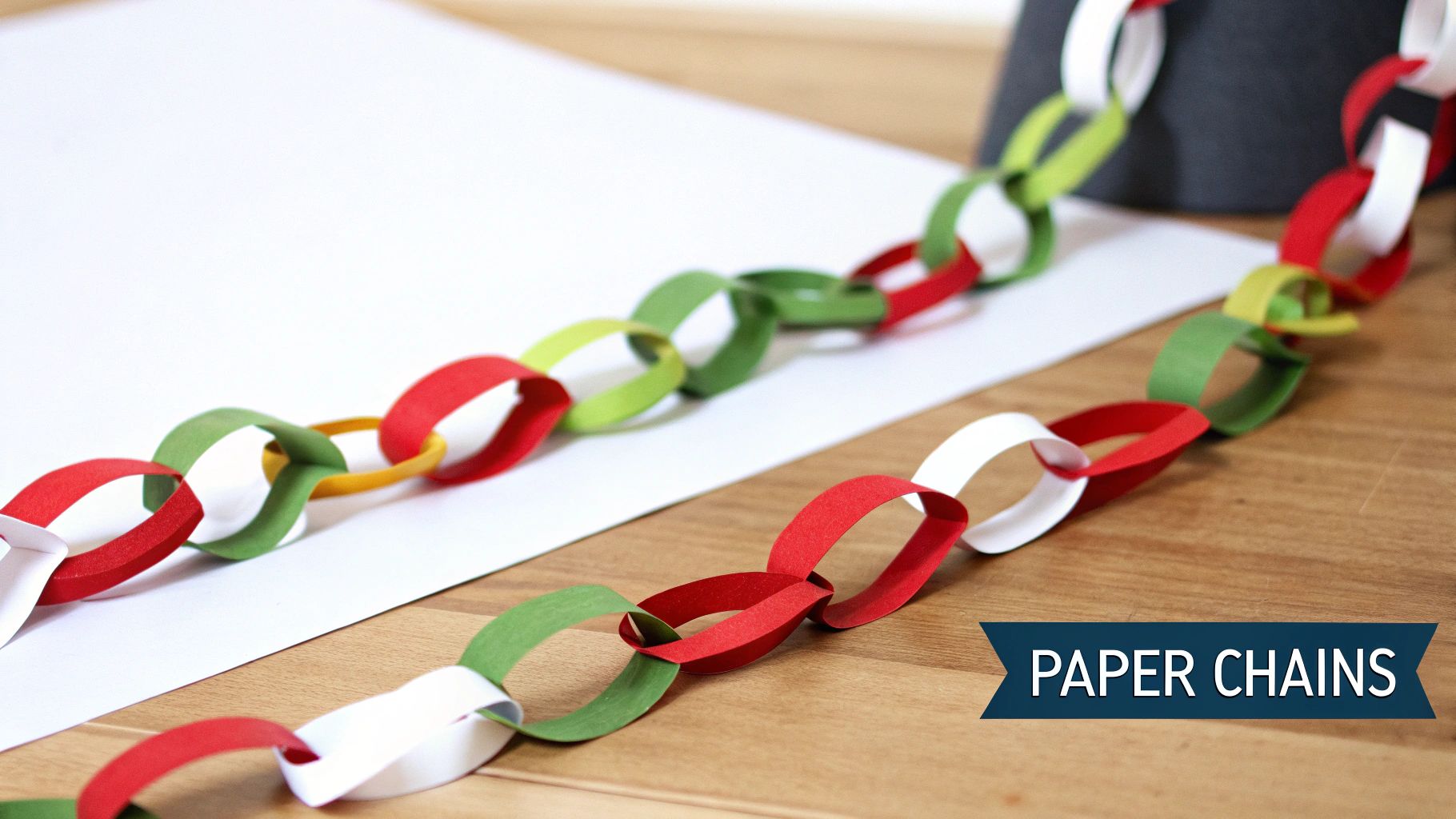
This simple craft is a fantastic tool for cognitive and physical development. Paper weaving significantly enhances fine motor control, hand-eye coordination, and concentration. It also builds pattern recognition skills and provides a relaxing, focused activity often used in educational settings like Montessori and Waldorf classrooms. Children can create Thanksgiving placemats with fall colors or craft woven heart baskets for holiday decorations.
Getting Started with Paper Weaving: Actionable Tips
To make the process smooth and enjoyable, set up the activity with clear, simple steps. The key is to prepare the materials in a way that allows children to focus on the satisfying weaving motion.
- Start with Wide Strips: Begin with paper strips that are about one inch wide. This makes the over-under motion easier for small hands to manage.
- Use Contrasting Colors: Choose a base sheet and weaving strips in highly contrasting colors (e.g., blue and yellow) to make the woven pattern pop and help children see the pattern more clearly.
- Pre-Cut for Young Kids: For younger children, pre-cut the vertical slits into the base paper, leaving a solid border at the top and bottom to hold it together.
- Secure the Ends: Once weaving is complete, use a dab of glue or a glue dot on the ends of each strip to keep them from sliding out.
- Laminate Finished Work: If you create placemats or coasters, laminating them will ensure they are durable and water-resistant for repeated use.
5. Paper Collage Art
Paper collage is a wonderfully freeing artistic technique where children arrange and glue down pieces of paper to create a new image. By cutting or tearing materials like construction paper, magazine clippings, tissue paper, and gift wrap, kids can compose anything from realistic scenes to abstract designs. This process encourages them to see shapes, colors, and textures as building blocks for a larger picture.
Inspired by renowned artists like Eric Carle (The Very Hungry Caterpillar), this activity is more than just cutting and pasting. It promotes creative problem-solving as children figure out how to represent an object using different paper shapes. It also develops fine motor skills through cutting, tearing, and placing small pieces, making it a valuable addition to any list of paper activities for kids.
Getting Started with Paper Collage: Actionable Tips
The beauty of collage is its low barrier to entry; there is no right or wrong way to do it. The goal is to encourage experimentation with materials and composition.
- Gather Diverse Materials: Collect a "collage box" filled with various paper types: glossy magazine pages, textured scrapbook paper, colorful tissue paper, and old wrapping paper.
- Plan the Design: Encourage kids to arrange their paper pieces on the background before gluing. This allows them to experiment with placement and layering without commitment.
- Tear vs. Cut: Demonstrate how tearing paper creates soft, organic edges perfect for clouds or fur, while scissors create clean, sharp lines ideal for buildings or geometric art.
- Use Glue Sticks: For younger children, glue sticks are less messy and easier to control than liquid glue, preventing oversaturation of the paper.
6. Paper Chain Crafts
Paper chain crafts are a wonderfully simple and classic activity where strips of paper are looped and interlocked to create long, decorative garlands. Children can cut their own strips or use pre-cut ones, then use glue or tape to form a circle. By threading the next strip through the previous loop before securing it, they can build colorful chains of any length, making it one of the most satisfying paper activities for kids.
This nostalgic craft is a fantastic way to develop foundational skills. The repetitive process of cutting, looping, and fastening enhances fine motor control and hand-eye coordination. It also serves as a hands-on introduction to patterns, sequencing, and even basic counting, turning a fun decoration project into a valuable learning experience. These are ideal for keeping kids busy and are a great addition to any list of engaging indoor activities for kids.
Getting Started with Paper Chains: Actionable Tips
To get the most out of this versatile craft, focus on preparation and creative applications. A little planning can transform simple loops into a meaningful project.
- Prep the Strips: Cut strips of construction paper approximately 1-inch wide by 6-8 inches long. Using different colors allows for creating vibrant patterns.
- Choose the Right Adhesive: A glue stick is perfect for younger children as it's less messy and dries quickly. For older kids who want to work faster, a stapler is a great alternative.
- Make It a Countdown: Create a holiday or event countdown chain (like for Advent or a birthday). Write a number or a fun activity on each link and remove one per day.
- Collaborate and Measure: Turn it into a group project where each child contributes links. You can even use the chains for a fun measurement lesson, seeing who can make a chain as long as they are tall.
7. Paper Airplane Design and Engineering
Paper airplane making elevates simple folding into a hands-on lesson in engineering and physics. This classic activity combines origami techniques with aerodynamic principles, allowing children to design, build, test, and refine their own flying machines. It’s one of the most exciting paper activities for kids because it brings science to life, demonstrating how small adjustments to wing shape, weight, and symmetry can drastically alter flight performance.
This STEM-focused craft introduces concepts like lift, drag, and gravity in an intuitive way. As kids iterate on their designs to achieve greater distance, longer hang time, or impressive acrobatics, they are engaging in the core engineering design process of prototyping, testing, and optimizing. This activity fosters critical thinking, problem-solving skills, and a fundamental understanding of physics.
Getting Started with Paper Airplanes: Actionable Tips
To turn this pastime into a learning experience, encourage experimentation and observation. The goal is not just to fold a plane, but to understand why it flies the way it does and how to improve it.
- Start Simple: Begin with a classic dart design that is easy to fold and flies reliably. Success with a basic model builds the confidence to tackle more complex designs later.
- Precision is Key: Emphasize making crisp, symmetrical folds. A well-aligned and sharply creased plane is crucial for stable, straight flight.
- Test and Tweak: Fly the planes in a safe, open space. Encourage your child to make one small adjustment at a time, like bending the wingtips up slightly or adding a paperclip to the nose, and observe the effect.
- Keep a Flight Log: Documenting changes and their resulting flight paths helps children connect cause and effect, reinforcing the scientific method.
8. Quilling (Paper Filigree)
Quilling, often called paper filigree, is a delicate art form that transforms thin strips of paper into intricate, three-dimensional designs. Children use a slotted tool or even a toothpick to roll narrow paper strips into coils, which are then shaped and glued together. This process allows them to create everything from detailed flowers and animals to beautiful patterns, making it a captivating paper activity for kids who enjoy detailed work.
This elegant craft is a fantastic way to develop patience, concentration, and design composition skills. The precise rolling, pinching, and placing of each coil provides an excellent workout for hand-eye coordination and is one of the most effective ways to improve fine motor skills. The surprising beauty that emerges from simple paper strips offers a deep sense of accomplishment.
Getting Started with Quilling: Actionable Tips
To introduce children to quilling, start with the right tools and simple shapes. The goal is to build their confidence by creating small, successful pieces before moving on to more complex compositions like quilled snowflakes for holiday ornaments or floral designs for birthday cards.
- Start with Pre-Cut Strips: Use pre-cut quilling paper to ensure consistency and save time, allowing your child to focus on the rolling technique.
- Master Basic Shapes: Begin by practicing simple forms like tight coils, loose circles, and teardrops. These are the fundamental building blocks for nearly all quilled designs.
- Use a Quilling Tool: A slotted quilling tool makes it much easier for small hands to grip and roll the paper strips evenly compared to using a toothpick.
- Draw a Guide: Lightly sketch a design on a piece of cardstock first. This provides a clear guide for placing the finished coils.
- Glue Sparingly: Apply a tiny dot of glue with a toothpick or a fine-tipped bottle to secure the end of the coil and to affix shapes to the background paper.
9. Paper Bag Puppets
Paper bag puppets transform simple lunch bags into expressive characters, turning a common household item into a canvas for imagination. This classic craft involves decorating a paper bag so that the bottom flap serves as a moving mouth. Children can draw, color, or glue on features to create animals, people, or fantastical creatures, seamlessly blending art with dramatic play.
This activity is a fantastic tool for developing storytelling skills, emotional expression, and fine motor control. As children design their puppets, they engage in creative decision-making. Later, bringing those characters to life through a puppet show builds confidence, enhances language skills, and provides a rich, hands-on learning experience. This craft is a perfect example of how paper activities for kids can support both artistic and developmental goals.
Getting Started with Paper Bag Puppets: Actionable Tips
Creating these puppets is simple and requires minimal supplies, making it an ideal activity for classrooms, parties, or a quiet afternoon at home. Focus on letting creativity lead the way.
- Master the Mouth: The folded bottom of the bag is the key feature. Encourage kids to glue a red paper tongue inside the flap and draw lips or teeth along the edge to make the puppet's mouth more dynamic.
- Add Dimension: Go beyond markers and crayons. Use yarn for hair, button eyes, or fabric scraps for clothes to add texture and personality. These additions also make it a great sensory activity.
- Create Character Sets: Make multiple puppets that belong to the same story, like the three little pigs and the big bad wolf. This encourages collaborative play and story retelling.
- Build a Stage: Turn a large cardboard box into a simple puppet theater by cutting out a rectangular window. This elevates the play experience and makes their performance feel special.
9 Paper Activity Comparison Guide
| Craft Type | Implementation Complexity 🔄 | Resource Requirements ⚡ | Expected Outcomes 📊 | Ideal Use Cases 💡 | Key Advantages ⭐ |
|---|---|---|---|---|---|
| Origami (Paper Folding) | Moderate - requires precision folds | Minimal - only paper needed, optional origami paper | Develops fine motor skills, spatial reasoning, patience | Educational lessons, therapy, parties | Portable, mess-free, cost-effective, culturally enriching |
| Paper Mâché Crafts | High - multi-stage with drying time | Moderate - paper, adhesive, molds, drying space | Builds planning skills, creativity, durable keepsakes | Classroom projects, group art, cultural celebrations | Recycles materials, great for collaboration, inexpensive |
| Paper Plate Crafts | Low - simple cutting and decorating | Low - disposable plates, basic art supplies | Supports creativity, basic cutting, and design thinking | Preschool crafts, holiday decorations, storytelling masks | Affordable, quick completion, sturdy base for embellishments |
| Paper Weaving | Moderate - requires cutting and weaving | Minimal - colored paper, scissors, glue | Enhances pattern recognition, fine motor skills, focus | Art therapy, cultural education, classroom placemats | Teaches sequencing, meditative, visually appealing |
| Paper Collage Art | Low to Moderate - cutting and arranging | Low - assorted paper types, glue | Encourages creativity, color theory, composition skills | Art classes, therapy, creative expression | Accessible to all skill levels, uses recycled papers |
| Paper Chain Crafts | Very Low - simple looping and gluing | Very Low - strips of paper and adhesive | Develops fine motor skills, pattern recognition, counting | Party decorations, classroom countdowns, group activities | Very easy, inexpensive, great for teamwork |
| Paper Airplane Design and Engineering | Moderate - folding plus testing | Minimal - standard paper | Teaches physics, engineering, problem-solving | STEM lessons, competitions, outdoor activities | Combines art and science, motivating through competition |
| Quilling (Paper Filigree) | High - detailed rolling and gluing | Moderate - specialized paper strips, tools | Builds fine motor control, patience, design composition | Card making, art shows, therapy | Elegant results, meditative, develops precision |
| Paper Bag Puppets | Low - decorating and simple assembly | Low - paper bags, markers, glue | Fosters creativity, storytelling, verbal communication | Literacy activities, drama integration, therapy | Affordable, combines craft and play, quick setup |
Making Learning Stick: Your Next Creative Adventure
We've journeyed through a world crafted from simple sheets of paper, exploring everything from the precise folds of origami to the whimsical storytelling of paper bag puppets. This extensive list of paper activities for kids demonstrates a powerful truth: the most impactful learning experiences are often born from the most accessible materials. A humble piece of paper becomes a gateway to creativity, a laboratory for scientific principles, and a canvas for self-expression.
The activities detailed, including paper mâché, quilling, and paper plate crafts, are more than just ways to pass an afternoon. They are carefully selected, multi-faceted tools for development. They represent a hands-on approach to learning that engages a child's mind and body simultaneously, cementing concepts far more effectively than passive observation ever could.
Key Takeaways: From Paper to Powerful Skills
Reflecting on these creative projects, several core benefits stand out, highlighting why incorporating these crafts into your routine is so valuable for a child's growth.
- Fine Motor Skill Mastery: Activities like quilling, weaving, and precise paper folding require concentration and dexterity. These movements strengthen the small muscles in the hands and fingers, which is crucial for developing handwriting skills and other detailed tasks.
- STEM Principles in Action: Don't underestimate the science behind the fun. Designing a paper airplane is a hands-on lesson in aerodynamics and physics. Creating a paper mâché sculpture introduces concepts of material science and structural integrity. These activities make abstract principles tangible and understandable.
- Boosting Creativity and Problem-Solving: A blank sheet of paper presents endless possibilities. When a child decides how to decorate a paper plate animal or build a collage, they are making creative choices and solving small-scale design problems. This process builds confidence and fosters an innovative mindset.
- Building Patience and Resilience: Not every fold will be perfect, and not every creation will turn out as planned. Working through the steps of a project, especially a more complex one like origami or paper weaving, teaches children the importance of patience, following instructions, and the rewarding feeling of seeing a task through to completion.
Your Action Plan for Creative Fun
The true power of these ideas lies in their implementation. The next step is to move from reading to doing. Don't feel pressured to try everything at once. Instead, transform inspiration into a memorable, shared experience.
- Choose One Activity: Review the list with your child. Which one sparks their interest the most? Let them lead the way.
- Gather Simple Supplies: Most of these projects require items you likely already have at home: paper, scissors, glue, and maybe some paint or markers.
- Schedule Dedicated Time: Set aside a screen-free hour this week. This dedicated time signals to your child that this creative endeavor is important and valuable.
Embracing these paper activities for kids is about more than just crafting; it's about fostering a love for learning, building essential life skills, and creating lasting memories, one fold, cut, and paste at a time. The simple act of creating together strengthens bonds and opens up new avenues for communication and collaboration. So, clear a space at the table, grab your supplies, and prepare to embark on your next creative adventure.
At Playz, we believe that hands-on exploration is the key to unlocking a child's potential. If you enjoyed the fusion of fun and learning in these paper activities, you'll love our collection of science kits and creative toys designed to make complex concepts unforgettable. Continue your family's educational adventure and discover your next favorite project at Playz.
